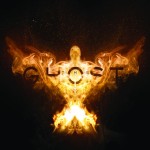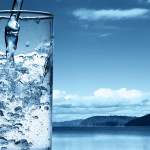How do we find God’s direction? The answer is in Scripture, of course! But Scripture typically doesn’t have the simple answer we’re looking for. Should I buy that car or not? Yes or No? That’s because the Bible, despite our expectations, isn’t primarily a how-to-manual or a list of applications. Instead, it’s mostly a book of stories, forming one BIG story. And stories, for a variety of reasons, are not easily copied.
Because of that, I’ve found it more helpful to read the Bible as the essential contours of an on-going narrative, a narrative that God wants to see continued in us, rather than a script which we must woodenly re-enact. Finding and then following God’s direction is more liked heeding the situational prompts in improv. Remember Whose Line is it Anway? In that show, a group of performers were given a scenario and then based on their cues, worked out what happened next. That’s a simple picture of the situation we find ourselves in now.
God has laid out some clear applications and commands in the Bible. But mostly he’s given us the better part of His story, a story that explains where we are right now. He’s established the stories course and pointed to its consummation. And now He calls us to work out our lives in ways consistent with its trajectory.
So what are the contours of God’s BIG story? How can we know if we’re getting the direction right?
Here’s the seven biblical prompts you and I must heed to find God’s direction.
1. The Kingdom is the Mission. Jesus called his followers to acitvely participate in the Kingdom of God’s arrival here on earth. Jesus’ summarized the whole of his message and ministry when he said: “the time is fulfilled, and the Kingdom of God is at hand; repent and believe in the gospel (i.e. the good news!)” (Mark 1:15, Matthew 4:17). He taught his disciples to proclaim the same thing (Matthew 10:7). According to Jesus, the Good News is the near arrival of the Kingdom.
And that is good news! Because this kingdom has been promised ever since the opening chapter of Genesis. In the beginning, God created man (male and female) not like one of the beasts, but in his own image, as extensions of his own rule in the world (Genesis 1:26-28). But sadly man surrendered to a beast and abandoned this right to rule (Genesis 3:8-19).
God’s mission, beginning with Abraham and then through the people of Israel, was to reestablish His reign in and among people (Genesis 12:1-3). And yet Israel also failed by worshipping foreign idols. God, however, promised a future ruler, resurrection and exaltation of His people over the idolatrous and beastly kingdoms of this earth (Ezekiel 37:1-14, Daniel 7:1-28). This is the kingdom that Jesus proclaimed as about to break out.
Is your life proclaiming the arrival of God’s Kingdom?
2. Christ is the Means. A kingdom needs a king, of course, and Jesus is that king. It may seem odd that Jesus proclaimed the near arrival of this kingdom some 2,000 years ago, especially if we equate the kingdom with heaven, which can seem very far away. But it makes sense when we recognize that Jesus actually inaugurated this kingdom in himself.
Jesus was born as the perfect image of God (John 1:1, 14) and as such he was and is the ideal ruler which God promised in the Old Testament. Jesus acted in ways consistent with the monarchs of Israel and His followers recognized this and acclaimed him with Jewish royal titles, such as “the Christ”(Psalms 2) “Son of David” (2 Samuel 7) and even the “Son of God” (2 Samuel 7). But of all titles, Jesus preferred to refer to himself as the Son of Man. Why? It’s the Son of Man in Daniel 7 who establishes God’s eternal kingdom.
Is Jesus the king of your life?
3. The Cross is the Moment. Jesus’ crucifixion is His coronation, the moment He received His Father’s kingdom in redeeming his people. There is no kingdom without a king. And there is, of course, no king without subjects. I know we in America don’t like the idea of being subjected to anyone. But Jesus’ reign, established in the cross, is unlike any reign of a king we have ever heard.
Jesus told his disciples, “You know that those who are considered rulers of the Gentiles lord it over them, and their great ones exercise authority over them. But it shall not be among you. But whoever would be great among you must be your servant, and whoever would be first among must be the slave of all. For even the Son of Man came not to be served but to serve, and to give his life as a ransom for many.” (Mark 10:42-45).
And this is what we indeed find in the cross of Christ. Jesus is crowned king in becoming the despised subject of a Roman crucifixion. Look at the references to Jesus’ coronation in Mark 15:16-27. The cross is an ironic reversal of what it means to rule. Those who rejected Jesus’ right to throne actually placed him on it. Through his death, Jesus purchased a people for God, a people over which he now rules (Titus 2:14).
Because Jesus became the least, God raised him from the dead and gave him “the name that is above every name, so that at the name of Jesus every knee should bow, in heaven and on earth and under the earth, and every tongue confess that Jesus Christ is Lord, to the glory of God the Father.” (Philippians 2:5-11)
Have you received the gift of the King?
4. The Cross is the Model.. Where the King leads, his subjects must follow. Jesus said, “a servant is not greater than his master, nor is the messenger greater than the one who sent him” (John 13:16). In the cross, Jesus blazed a new and living way by which he calls us to follow.
The cross is not just something Jesus did for us that we can’t do for ourselves. It is that. But it is also the pattern we are now commanded to live. Jesus demonstrated the way of salvation. He taught us, “if anyone would come after me, let him deny himself and take up his cross and follow me. For whoever would save his life will lose it, but whoever loses his life for my sake and the gospel’s will save it.” (Mark 8:34-35).
If King Jesus rules as a servant who are his people to do otherwise.
Are you living in the manner of King Jesus?
5. The Church is the Movement. It’s the expanding ghetto or community of God’s kingdom people. With Jesus’ resurrection and exhalation to the right hand of God, he has begun to rule by pouring out the Holy Spirit upon his people. Through His Spirit he has united his church and empowered them to advance His reign (Acts 1:8, 1 Peter 2:10).
For those who have received Jesus as king and have become partakers of the Spirit, the kingdom of God has already begun to reach earth. The Church is the beachhead of Christ’s earthly rule.
Daily the Church practices the lifestyle that Jesus has called them to and extends the boundaries of the kingdom in teaching and witness. Weekly, they gather together to celebrate the kingdoms arrival. They gather around the throne, the feasting table, or what we call communion, to remember the sacrifice and share the living food that Christ has given to them. In the presence of him who bore our sin, they lose all bitterness and forgive as Jesus the king has forgiven them.
Are you united with the King’s people?
6. The Commission is the Method. The reign of King Jesus is spread through the commission Jesus gave to his followers. Jesus called his disciples to go and make disciples of all nations, baptizing and teaching them all that he had commanded (Matthew 28:18-20). The Church advances the kingdom by calling people to make a decision for Christ in baptism and teaching them to live as Christ has lived and taught us to live.
Are you inviting people to the King and teaching them to live like Him?
7. The Coming is the Motive. The eternal kingdom which Jesus inaugurated and over which he now rules is not complete. We, his subjects, continue to pray as he taught to pray, “your kingdom come, your will be done, on earth as it is in heaven.” (Matthew 6:10)
The Gospel, or Good of News, according to Jesus is the arrival of the Kingdom! The kingdom is both now and not yet. It’s arrived in Jesus and is presently being lived out in the confines of the Church. But the future completion, and the arrival of Jesus in bodily form is what we continue to hope and pray for. And thus its something we ceaselessly work towards.
Jesus has equipped and empowered his church to bring about the unification of heaven and earth. And as we live His kingdom, we will see Christ exalted and Him come again.
Are you longing for and working towards the King’s arrival?
I think that’s simple enough. In fact, simple enough to memorize.
- The Kingdom is the Mission
- Christ is the Means
- The Cross is the Moment
- The Cross is the Model
- The Church is the Movement
- The Commission is the Method
- The Coming is the Motive
This is God’s BIG picture! Your God-given-direction is found in living a life consistent with this trajectory.






















